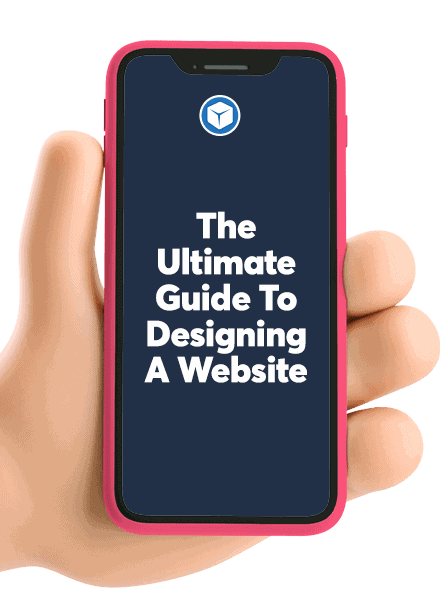
What we have been demonstrating during this content engagement series is the number one factor to put forward when it comes to formatting your page layouts is quality content. This will be the most impacting strategy you can use in terms of a website that is engaging, useful, shows your expertise and gives other websites a reason to align with you.
We have not discussed styles, colours and technology add-ons much at all, other than to say; keep it simple, make sure it is in line with your content and business design and go for real images, videos and content over fake-looking stock images.
So here is the first article in the series to talk about how to create engagement with technology. In particular, we’re looking at what tools you can select to determine how your prospect engages with your Call To Action.
Now remember, there are plenty of friendly Calls To Action made available to your readers on every page.
Some are Primary ones, that link directly to you or your shopping cart that will transition them from prospect to lead as quickly as possible, others are Secondary ones that offer more reading, more proof of your ability or a gentle suggestion to keep them engaged while they think things over.
Now that you have made positive engagement with your quality content, it’s time to decide what the next engaging step will look and feel like, using technology.
There is an overwhelming selection of tools and plugins available for you to choose from. Browse and choose the ones that work best for your business. It’s also important to spend time online browsing websites you like to see what their Call To Action choices are and how that fits both their product and your experience.
Just to recap from the earlier articles in this series on using primary and secondary actions, you want to give your users multiple pathways towards the goal, the goal being to commit to your business.
You need to prepare for two types of readers, those who are motivated and ready to buy, sign up or meet you in person, and those who are interested but want to do more research to decide if what you offer is really right for them.
For those motivated and ready to buy or take the next step you will offer a Primary action step. These readers will be given a shortcut direct to booking an event, placing something in an online cart or submitting information for gated content or filling in an online assessment.
The biggest influencing factor for what call to action you select is what your business offers. That will determine what your primary action steps will most likely be.
For those looking for more proof, more detail or to get to know your business better, they will skip the offers for Primary CTAs as they scroll through and will prefer taking on a Secondary CTA. They may want to have some questions answered, read other articles or testimonials or leave the idea to sit for a while. For your Secondary CTAs something that might work well is a newsletter subscription or to direct them further into your website for more information.
In this blog, we’ll look at the five most commonly used marketing CTAs and how to structure them in your web design for effective engagement with your prospects.
While there are many variations, here are the five main stand-alone Call To Action (CTA) points you will come across. Whether these are used as primary or secondary action steps is completely up to you and your business structure.
Each of these five Call To Action points is designed to have a very definite look, feel and response. Select the actions that have the best fit for your readers and their product journey with you.

1. Sidebar Widgets
Sidebar widgets or Smart CTAs are an extremely effective tool that delivers a targeted action step to your visitor, just when they need it. In order to access this technology you’ll need to have a HubSpot professional or enterprise account.
As a HubSpot subscriber, you define the rules for which of your website visitors receive what message. This way you get a selection of CTAs the system can choose from to deliver the right message, to the right person. There are also default CTAs for anyone outside of your stated criteria.
Smart CTAs have been proven to be significantly more effective for converting prospects to leads than basic CTAs.
The sidebar widgets use a prospect’s online session history within your website. That means they won’t be shown action steps they have already taken. For example, if they have previously already signed up for the newsletter, the two CTAs shown to them on the sidebar widget might be, Attend the Webinar, and Read the Independent Review.
If they have already viewed the webinar they might get options for downloading the transcript or attending a follow-up session.
This way you are only showing them relevant CTAs, which is a win-win situation for both you and your users.
To make this work you want to have access to a lot of your user information, in particular their full name, email and country of residence. These will be shown to users through the smart CTA forms. Getting those forms filled in does require some trust on their part so be sure to make this as friendly and safe as possible for your readers.
Having the Smart CTA form filled in will allow you to keep an organised and well-structured user database as well as enabling you to personalise your messages and greetings.
Your user can see that your system recognises them, it can be a nice personal touch that saves them time and allows them to pick up where they left off.
For best results use action words (verbs) like Download, Subscribe, Book Now, Add To Cart. These are clear directions that encourage readers to follow.
The sidebar location of these Smart CTAs is important as it allows access at any point in the content.
2. Opportunity Forms
Unlike Smart CTAs, an opportunity form will be placed within the content flow and (or) below the content conclusion. The reason for this is that you only want interested and committed prospects to take this step, i.e. those who have read and understood what you have offered and are ready for the next step.
Contact forms provide direct interactions with you or your team, so you want this to be with those prospects that are ready to commit.
These are not to be confused with a Contact Us form. This is geared towards a specific purchase rather than a general enquiry. If possible try to answer as many general enquiry type questions in your web content and pages.
Where possible allow Opportunity Forms to auto-fill on any stored prospect data. Your prospect will appreciate the time saving aspect.
3. Calculators and Assessments
Self-assessment tools are great engagement opportunities for certain industries that allow a user to test to see how ready they are to commit or give them an idea of how close they are to their goal.
Industries where this works well are typically in financial services, insurance, and any type of investment. Common examples are home loan calculators, car finance assessments and insurance premium calculators.
The places where this works is where a structured and firm formula, based on qualitative data, is in place to make the outcomes accurate for each assessment, which is why financial sectors can really utilise these CTAs well.
When a prospect can see that they qualify for your services, they become motivated to take action and achieve their goals.
When it comes to the look and feel of calculators and self-assessment tools, go for big, bold and persistent displays. These are highly engaging and entertaining CTAs so make sure they are easy to spot and are designed and placed on the page to catch user attention.
4. Gated Content
Gated content can be a really powerful secondary action step. Gated content is where users can access something unique and desirable of yours, for free. In return they give you their contact details, typically a first name and email address, is enough.
You then add this contact to your database and they will join your nurturing sequence of emails. Basically, it’s a warm marketing list you can keep warm with gentle offers and reminders of your services.
There are a few traps here. Firstly the content you offer needs to be captivating and unique.
Secondly, you need to earn your prospects’ trust. Over time users have become distrusting of being on mailing lists due to spam and third party list sales. Be sure that you keep your nurturing sequence light and friendly so that those on the list don’t feel taken for granted.
Usually a call to action here will take users to a dedicated landing page to enter the gate and download the desired information or have it emailed to them directly.
You’ll want to have a really good teaser type of sentence that demonstrates what users will get if they sign up. Usually content inside a gate solves a specific problem without any further purchase.

5. Repeated content CTAs
Repeating a CTA over and over again within your content, say after every paragraph or two, can be effective if the point of the content is to take action.
In these cases an action step is expected and warranted, not seen as a pushy sale, so you can go big, and go often. The point is that if someone wants to read to the very bottom of the article before they sign on, they can, if they want to at any other point in reading, they can do that also. These steps are seen as helpful shortcuts, not marketing strategies.
For example, if you wanted people to add their name to a guest list to attend an event that is described in detail in the content, then you would have multiple, repeat offers to book now or save your seat during the content itself as well as at the bottom.
As well as placing repeating CTAs in line with your content, it may be relevant to have repeating action steps within your content hub listings, say every four or five articles in your list.
When it comes to choosing which CTA tools you use, what they look like and how they feel for your user, it really does depend heavily on your product, what you offer and how your customer engages with you in order to get it. No doubt you will have a logical sales sequence, your CTAs will simply model and enhance these.
Look for logical steps and natural courses of action your user will want to take and offer them in ways that are friendly and welcoming.
Make sure you have plenty of wide-ranging, quality content that you can use to display your CTAs and act as gated content freebies to engage your prospects and give them more familiarity with your business to increase their trust and willingness to commit to a purchase.
The Ultimate Guide To Designing A Website:
- How to write copy for a better positioning statement
- How to guide your prospect through your website
- The best way to design your home page
- The best way to design your capabilities landing page
- The best way to design your services landing page
- The best way to design your case study layout
- How to design your content marketing hub layout
- How to design your content marketing article layout
- The five essential prospect engagement points
- The best stock imagery style guide





